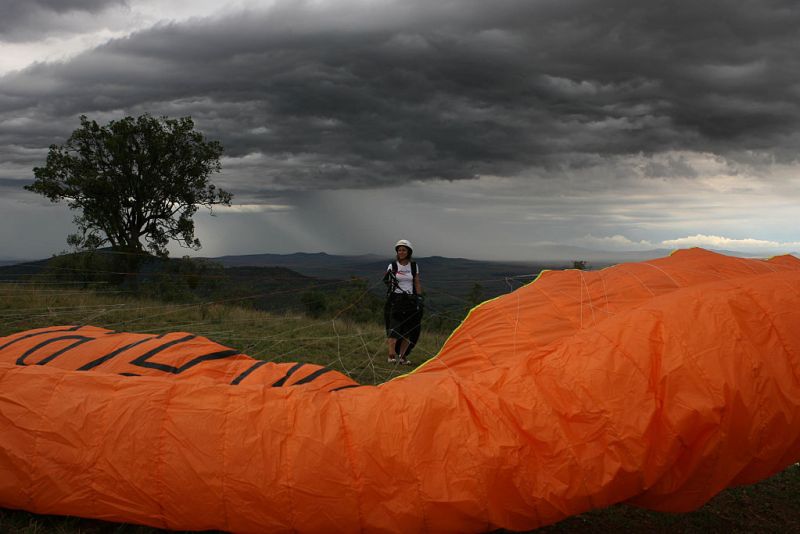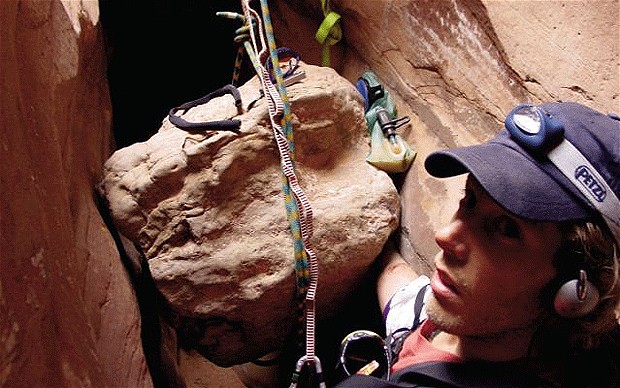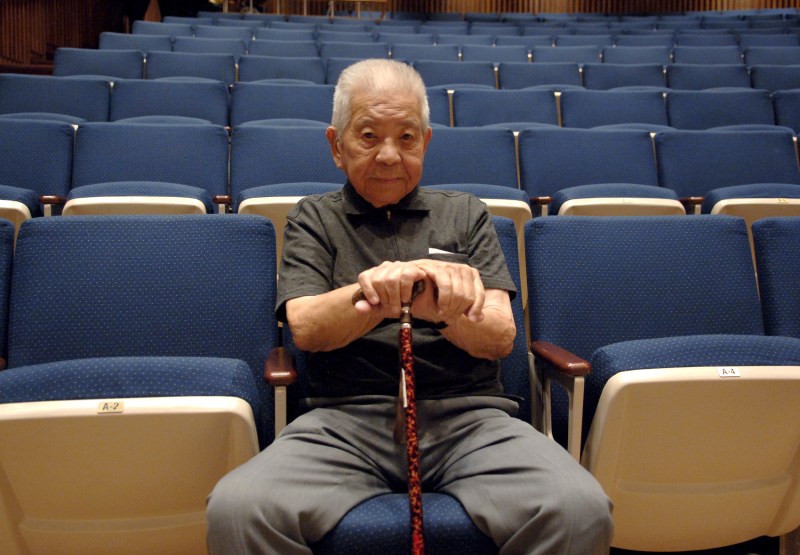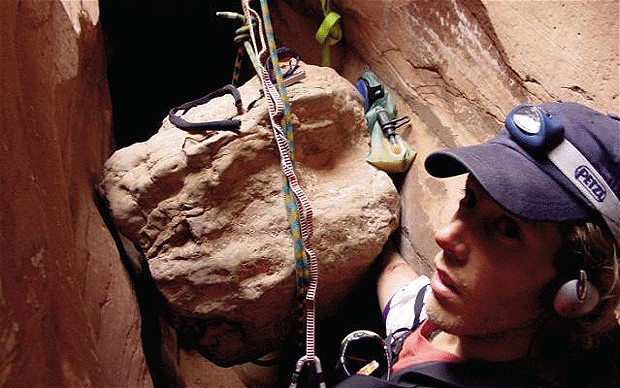Many in our midst who have survived the unthinkable. Hollywood has capitalized on some these unbelievable — but inspiring — stories, but the true-life events are much more harrowing than they might seem on film. Others who cheated death don’t get films made about their lives. Instead, they just continue living, even going back to the job or activity that almost killed them. Let’s take a look at some of the people who survived events that were truly a matter of life or death.
Ewa Wisnierska

Ewa Wisnierska got caught in a massive thunderstorm over Australia while paragliding and was sucked 32,000 feet into the air. Wisnierska was so high that she lost consciousness from lack of oxygen, and her whole body was covered in ice. She suffered severe frostbite and almost lost her ears. She encountered hailstones the size of oranges and the temperature dropped to minus 58 degrees Fahrenheit. She remembers regaining consciousness about an hour later and she was able to land about 40 miles from her launch. Besides the frostbite, she was otherwise unharmed. The storm sucked another paraglider, Zhongpin, up as well, but he unfortunately died from lack of oxygen and cold and was found about 50 miles from where he took off. Wisnierska’s ordeal was recorded by a global positioning beacon and a radio attached to her equipment.
Aron Ralston

Aron Ralston survived 127 hours with his arm trapped to the wall of a deep, narrow canyon. Ralston, whose story is well-known thanks to the film, 127 Hours, starring James Franco, was an avid hiker. He was on a trip near Robbers Roost in Utah. Near Bluejohn Canyon, Ralston slipped and an 800-pound boulder became dislodged, trapping Ralston’s right arm and pinning it to the wall of a very deep, narrow canyon. He did what he could to try to move it, but realized that he would have to cut his arm off to free himself.
He told The Telegraph: “I realized early on that I was going to have to cut my arm off to get free but there was also resistance: I didn’t want to do it. But by the second day I was already figuring out how I could do it, so in the film you see that progression: trying to cut into the arm like a saw, finding the tourniquet, then the realization that the knife was too dull to get through the bone. That despair was followed by a kind of peace; a realization that I was going to die there and there was nothing I could do. It was no longer up to me. All I could do was see it through to the end.”
Ralston realized that even though his knife couldn’t get through the bone, he could bend the arm and use the boulder and his body weight to violently break his forearm. He used a rubber hose from his hydration pack as a tourniquet and sawed through the rest of his arm.
The 1972 Andes Plane Crash

In 1972, members of the Old Christian Brother rugby team were flying from Montevideo to Santiago on an Uruguayan aircraft when the plane went down in the mountains in Argentina, near the border with Chile. After two months, 16 survivors were rescued. Of the original 45 passengers on the plane, 27 survived the crash. But then an avalanche killed eight more. Their story has been documented in documentaries, books and movies. The most gruesome part of the story is the fact that they had to resort to cannibalism to survive.
“Our common goal was to survive — but what we lacked was food. We had long since run out of the meagre pickings we’d found on the plane, and there was no vegetation or animal life to be found,” Roberto Canessa, who at the time was a 19-year-old medical student and rugby player, wrote for The Daily Mail. “After just a few days we were feeling the sensation of our own bodies consuming themselves just to remain alive. Before long we would become too weak to recover from starvation. We knew the answer, but it was too terrible to contemplate.”
After he was rescued, Canessa, now a pediatric cardiologist, told his dad he was most concerned with how the victims’ families would react to the harsh reality that the survivors had to eat their dead friends to stay alive. But according to The Independent, “people were very receptive and very supportive and they consider what we did something we had to do so everything went very smoothly.”
Frano Selak

Frano Selak has survived seven different deadly experiences, which has led journalists to dub him both the luckiest and unluckiest man in the world. Here are all the things he survived, according to Gizmodo (and then he won the lottery):
1. In 1962, a train flips off the track and crashes into a river. Seventeen people died, but Selak survived.
2. In 1963, a plane crash killed 19 people but Selak was sucked out of a malfunctioning door and landed in a haystack.
3. In 1966, a bus he was on skidded off the road and into a river and killed four people. Not Selak, though.
4. In 1970, a car catches fire but Selak manages to escape before it explodes.
5. In 1973, his car caught on fire and shot flames through the air vents. But Selak survives.
6. In 1995, he was hit by a bus but lived.
7. In 1996, Selak misses head on collision in his car but fell off the road. He was ejected from his seat and held on to a tree. His car plummeted 300 feet down, but Selak survived.
In 2003, Selak won about a million dollars in the lottery and in 2010 he gave most of it away.
Tsutomu Yamaguchi

When the United States dropped the first atomic bomb on Hiroshima, Tsutomu Yamaguchi, a 29-year-old naval engineer, was preparing to leave the city. He had been on a three-month-long business trip for his employer, Mitsubishi Heavy Industries and Aug. 6, 1945, was supposed to be his last day in Hiroshima. He was walking to Mitsubishi’s shipyard one last time when he looked up and saw an American B-29 bomber soar over the sky and drop a small object. Yamaguchi remembers the sky erupting in a blaze of light. He barely had time to jump in a ditch before an “ear-splitting boom” rang out. History writes, “the shock wave that accompanied it sucked Yamaguchi from the ground, spun him in the air like a tornado and sent him hurtling into a nearby potato patch.” When he woke up, he was unsure what had happened. His face and forearms were badly burned and both eardrums were ruptured. He had been less than two miles from ground zero.
Yamaguchi did make it home to his wife and son in his hometown of Nagasaki, but in order to get to the train station, he was forced to swim through a layer of dead floating bodies because the bridges had been destroyed. On Aug. 9, Yamaguchi reported for work at the Mitsubishi’s Nagasaki office. But around 11 a.m., when Yamaguchi was describing the atomic bomb to his boss, the blinding light came back. The atom bomb that hit Nagasaki was even more powerful than the one dropped on Hiroshima, but Yamaguchi emerged relatively unhurt. For the second time, he survived a nuclear explosion that landed within two miles of him. His wife and son survived as well; they hid in a tunnel because they were out looking for burn ointment for his wounds from Hiroshima.
Anatoli Bugorski

Anatoli Bugorski is a Russian scientist who was struck in 1978 by a particle accelerator beam. He was a researcher at the Institute for High Energy Physics and he worked with the largest Soviet particle accelerator, the U-70 synchrotron. On July 13, 1978, the equipment was malfunctioning, so Bugorski went to check on it. The safety mechanisms failed. Bugorski was leaning over the equipment when he stuck his head in the path of the 76 GeV proton beam. It is reported that he saw a flash “brighter than a thousand suns” but did not feel any pain.
About 400 to 500 rads of radiation is enough to kill a person. When the proton beam entered Bugorski’s skull, it measured about 200,000 rads and when it exited, it measured about 300,000 rads. Bugorski was brought to a clinic in Moscow to be observed. Immediately after the event, the left side of his face swelled beyond recognition, and in the next few days, skin on the back of his head and on his face just next to his left nostril peeled away, showing the path the beam had burned through the skin, the skull and the brain tissue. The left side of his face was paralyzed, but Bugorski lived. He also was capable of continuing in science. He did had seizures for years after, and though the right side of his face aged, the left was frozen in time.
Truman Duncan

Truman Duncan was working at his job in the rail yards of Cleburne, Texas, when he slipped and fell onto the tracks while riding on the front of a train car that was heading to a repair dock. He tried to outrun the train, but he was pulled under it.
“It just felt like a monster,” he said, according to ABC News. “I couldn’t get away from it, like it was just pulling me in, and I’m pushing away … [and] I was cut in two.”
He was dragged 75 feet and his lower body was entangled in the wheels of the train. Duncan was cut nearly in half at the waist, with one leg attached by a single muscle, reports ABC. He was able to get his phone and call 911. Helicopter paramedic James Bailey told ABC that he thought Duncan had a one in a million chance of surviving. He had 23 surgeries over the next six weeks. His left leg was amputated at the hip and the right leg was amputated above the knee. But he survived, and he now has an office job at the rail yard.
Tami Oldham Ashcraft

Her story has been made into a movie, Adrift, but the real life experience was a lot more harrowing than Shailene Woodley and Sam Clafin make it appear. In September 1983, Tami Oldham Ashcraft and her fiancé, Richard Sharp, had been sailing for six months. They took a job delivering a 44-foot yacht from Tahiti to San Diego, but they were hit by one of the worst hurricanes in history three weeks into the trip. The yacht “flipped end over end,” writes Mirror. The couple fought to keep the yacht from sinking as they battled 40 foot waves and 140 knot winds. Then Hurricane Raymond changed direction, battering them again. Sharp insisted Ashcraft get down below deck and he secured himself with a safety harness. Below deck, Ashcraft heard Sharp shout, “Oh my god!” and then nothing, according to her book, Red Sky in Mourning: A True Story of Love, Loss and Survival at Sea.
Ashcraft was knocked out when the boat capsized, and when she woke up 27 hours later, she scrambled up to the deck and found Sharp’s safety line dangling off the boat, but he was just gone. She thinks he was yanked off the tether and swept overboard by the wind and waves. But Ashcraft had to keep herself alive for another 41 days. She only had a sextant, a navigational instrument, and a watch to help her navigate her severely damaged boat the 1,500 miles to Hilo, Hawaii. She survived on peanut butter and canned fruit. She still loves to sail, according to the Mirror, and is a licensed captain.
This article was featured in the InsideHook newsletter. Sign up now.























